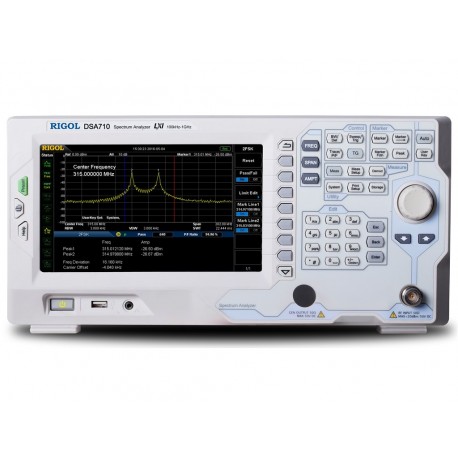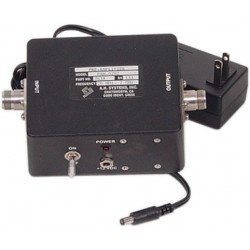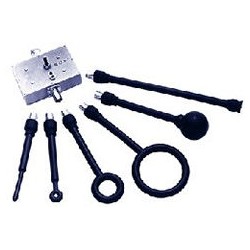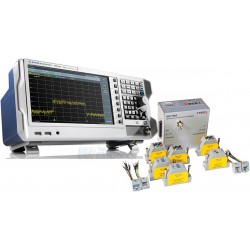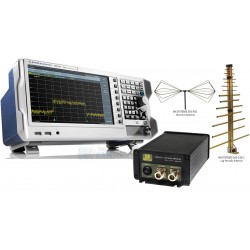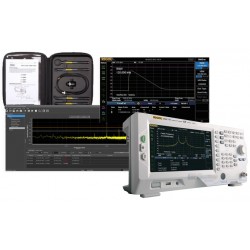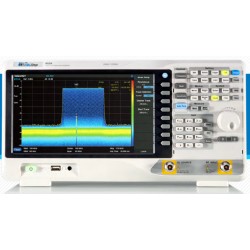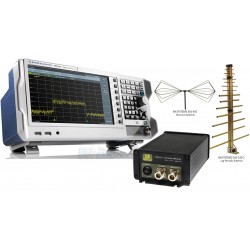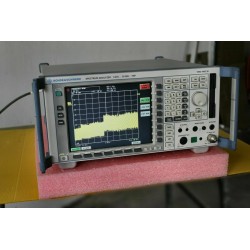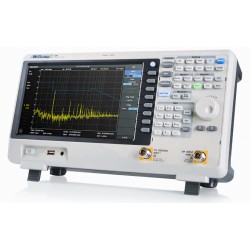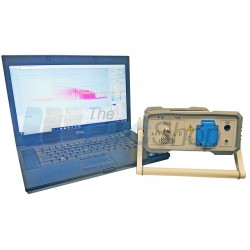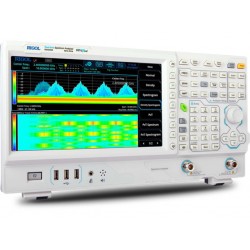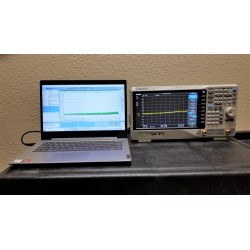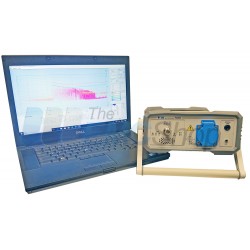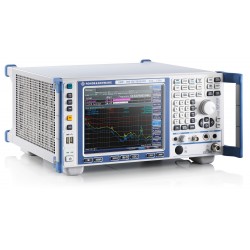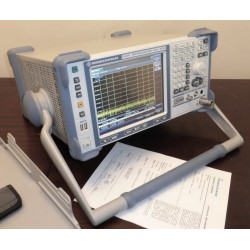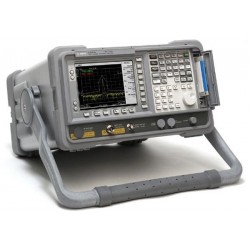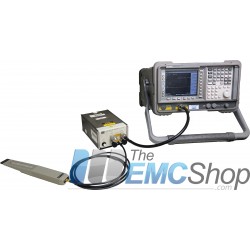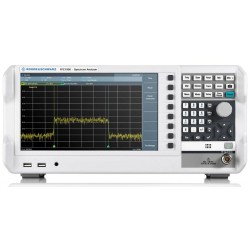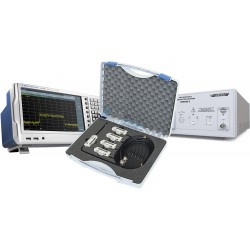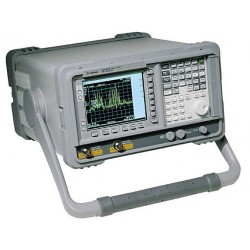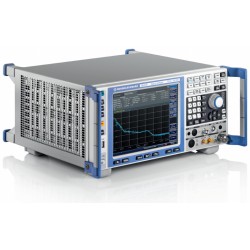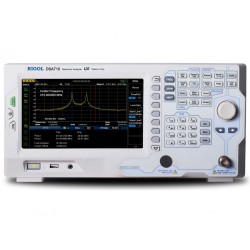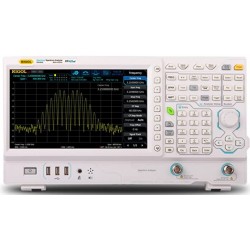No products
Product successfully added to your shopping cart
There are 0 items in your cart. There is 1 item in your cart.
Precompliance EMI Test Receivers
- EMC Test Equipment
- Transient Generators
- RF Power Amplifiers
- DC - 300 kHz RF Amplifiers
- 10 kHz - 250 MHz RF Amplifiers
- 10 kHz - 400 MHz RF Amplifiers
- 10 kHz - 1 GHz RF Amplifiers
- 80 MHz - 1 GHz RF Amplifiers
- 1 GHz - 2 GHz RF Amplifiers
- 700 MHz - 4.2 GHz RF Amplifiers
- 1 GHz - 6 GHz RF Amplifiers
- 2 GHz - 8 GHz RF Amplifiers
- 6 GHz - 18 GHz RF Amplifiers
- 18 GHz - 40 GHz RF Amplifiers
- Pulse Amplifiers
- RF Field Strength Probes & Meters
- RF Conducted Immunity
- EMC Receivers/EMI Analyzers
- EMC Antennas
- Coupling Decoupling Networks (CDN's)
- Line Impedance Stabilization Networks (LISN's)
- RF Test Equipment
- EMC Probes
- EMC Measurement & Equipment Software
- Power Supplies
- Electrical Safety Analyzers
- High Precision Laboratory Power Analyzers & Meters
- Anechoic Chambers
- Over-the-Air (OTA) Test Chambers
- EMI RF Shielded Tent Enclosures
- RF Shielded Rooms
- EMC Absorber
- Positioning Equipment
- EMC/EMI Test Setup
- GTEM Cells / TEM Cells
- Reverberation Chambers
- Used RF Anechoic Chambers
- EMC Chamber Filters
- EMC Chamber Shielding Gaskets
- RF Shielded Doors
- Anechoic Chamber Accessories
- Fully Anechoic (FAR) Test Chambers
- Manufacturers
- 3ctest
- AE Techron
- AH Systems
- Amplifier Research
- Boonton
- Com-Power
- Diamond Engineering
- EM Test (Ametek CTS)
- EMC Partner
- EMC Test Design
- Empower High Power RF Amplifiers
- ETS-lindgren
- Log Periodic Dipole Array Antenna
- Near Field Probe Sets
- Double Ridge Horn Antennas
- Biconical Antennas
- Quad Ridge Horn Antennas
- Electric Field Probes
- GTEM's
- Positioners & Tripods
- Loop Antennas
- Biconilog Antennas
- LISN's (Line Impedance Stabilization Network)
- Shielded Enclosures/Rooms
- Monopole Antennas
- Field Generating Antennas
- Fischer Custom Communications
- Haefely Hipotronics
- Haefely EFT/Burst Immunity Test Systems
- Haefely Surge Combination Wave Test Systems
- Haefely Surge Damped Oscillating Wave Test Systems
- Haefely Electrostatic Discharge Test Systems (ESD)
- Haefely Surge Ring Wave Test Systems
- Haefely Surge Telecom Wave Test Systems
- Haefely Magnetic Field Test Systems
- Haefely CDN's (Coupling/Decoupling Networks)
- IFI Amplifiers
- Keysight (Agilent)
- MVG - Microwave Vision Group
- PMM / Narda
- Rohde & Schwarz RF Test Equipment
- Rohde & Schwarz Broadband RF Amplifiers
- Rohde & Schwarz Spectrum Analyzers
- Rohde & Schwarz Compliant EMI Test Receivers
- Rohde & Schwarz Isotropic RF Probes
- Rohde & Schwarz RF Signal Generators
- Rohde & Schwarz RF Switches
- Rohde & Schwarz Oscilloscopes
- Rohde & Schwarz RF Power Meters
- Rohde & Schwarz RF Power Sensors
- Schloder
- Schwarzbeck Mess-Elektronik
- Schwarzbeck Antennas
- Schwarzbeck Automotive Antennas
- Schwarzbeck Broadband Horn Antennas
- Schwarzbeck Biconical Antennas
- Schwarzbeck Logarithmic Periodic Broadband Antennas
- Schwarzbeck Stacked Log-Periodic Broadband Antennas
- Schwarzbeck Biconic Log-Periodic Antennas
- Schwarzbeck Dipole Antennas
- Schwarzbeck Rod Antennas
- Schwarbeck Antenna Baluns / Holders
- Schwarzbeck LISN Line Impedance Stabilisation Networks
- Schwarbeck Decoupling & Absorbing Clamps
- Schwarzbeck Field Probes
- Schwarzbeck Helmholtz Coils
- Schwarzbeck Antenna Masts
- Schwarzbeck Coupling/Decoupling Networks
- Schwarzbeck Antennas
- Solar Electronics
- Teseq (Schaffner)
- Teseq Automotive Transient Generators
- Teseq RF Test Equipment
- Teseq EFT/Burst Generators
- Teseq RF Immunity Generators
- Teseq ESD Guns
- Teseq Surge Generators
- Teseq Harmonics & Flicker Solutions
- Teseq Dips, Interrupts & Variations Equipment
- Teseq Ring Wave Generators
- Teseq Oscillatory Waves Generators
- Teseq Absorbing Clamps / Ferrite Tube
- Teseq EMC Antennas
- Teseq Current Probes
- Teseq Coupling Networks
- Thermo Keytek
- Vicreate
- Compliance Standards
- International (IEC/EN)
- EN/IEC 61000-3-2
- EN/IEC 61000-3-3
- IEC 61000-3-11
- IEC / EN 610000-3-12
- EN/IEC 61000-4-2
- EN/IEC 61000-4-3
- EN/IEC 61000-4-4
- EN/IEC 61000-4-5
- EN/IEC 61000-4-6
- EN/IEC 61000-4-7
- EN/IEC 61000-4-8
- EN/IEC 61000-4-9
- EN/IEC 61000-4-10
- EN/IEC 61000-4-11
- EN/IEC 61000-4-12
- EN/IEC 61000-4-16
- EN/IEC 61000-4-18
- EN/IEC 61000-4-19
- EN/IEC 61000-4-20
- EN/IEC 61000-4-21
- EN/IEC 61000-4-29
- EN/IEC 61000-4-31
- IEC 61000-4-39
- EN/IEC 62132
- SEMI F47 Voltage Sag Immunity
- Product Standards
- Military & Aerospace Standards
- Automotive EMC Standards
- CISPR Standards
- Telecom Testing
- ANSI/IEEE Standards
- FCC Part 15
- FCC Part 30
- International (IEC/EN)
- Application/Test Type
- Radiated Immunity
- Bulk Current Injection Testing
- RF Emissions Testing
- Conducted Immunity
- Conducted Emissions
- Antenna Pattern Measurement
- CE Mark Testing
- Intentional Radiator Testing
- Pulsed HIRF Radar
- Over-the-Air (OTA) Testing
- 5G Test Solutions
- Automotive EMC
- SAR Measurement Equipment
- Radiated Emissions
- Battery Simulator Test Equipment
- Services
- Clearance
Viewed products
-

Rigol DSA710 100kHz to...
100kHz to 1GHz Frequency Range...
-

Boonton CPS2008 Power...
50 MHz to 8 GHz frequency range -40...
Rigol DSA710 100kHz to 1GHz Spectrum Analyzer
New
- 100kHz to 1GHz Frequency Range
- Displayed average noise level (DANL) <-155dBm/Hz typ. with preamplifier on
- Minimum resolution bandwidth (RBW) 100Hz
- Phase noise <-80dBc/Hz @10kHz offset
- Level measurement uncertainty <1.5dB
- 8" (800 x 480) high-definition display
- Linear and logarithmic frequency axis
- Connectivity: LAN(LXI), USB Host & Device
- PictBridge support
- Compact size and light weight
- Supplied with... USB cable, UK & European mains leads, quick guide,
- Optional PC software... Ultra Spectrum, S1210 EMI Pre-Compliance Test
- Other options include... EMI filter & quasi-peak detector, advanced measurement functions, 2FSK measurement & analysis in signal seamless capture mode, USB to GPIB module, rack mount kit, soft carry bag, RF transmitter demo kit, RF receiver demo kit, high power attenuator, RCL standard calibration
To Rent Rigol DSA710
PDF Downloads
Test Equipment Description
The Rigol DSA710 is a compact and light weight Spectrum Analyzer with premium performance for portable applications. The use of digital IF (intermediate frequency) technology guarantees reliability and performance to meet the most demanding RF applications. The very large display (20.3 cm / 8") of the Rigol DSA710 Spectrum Analyzer provides a resolution of 800x480 pixels allowing a very good overview of all its comfortable functions like Auto Tune, Auto Range, Auto Scale and Auto Couple. These functions enable the analyzer to acquire signals and match parameters automatically, compared to the manual process necessary with a traditional analyzer. The Rigol Spectrum Analyzers have a sophisticated and easy to use user interface offering multiple functions for all tasks. The menu navigation is very intuitive and all functions and parameters are easy to locate thanks to the graphical interface.
Benefits of Rigol's all Digital IF Design
- High precision amplitude readings: this technology almost eliminates the errors generated by filter switching, reference level uncertainty, scale distortion, as well as errors produced in the process of switching between logarithmic and linear display of amplitude when using a traditional analog IF design.
- Higher reliability: compared with traditional analog designs, the digital IF greatly reduces the complexity of the hardware, the system instability caused by channel aging, and the temperature sensitivity that can contribute to parts failure.
- The ability to measure smaller signals: on the basis of this technology, the IF filter enables smaller bandwidth settings, which greatly reduce the displayed average noise level.
- The ability to distinguish between small signals by frequency: using the IF filter with the smallest bandwidth setting, it is possible to make out signals with a frequency difference of only 100 Hz.
- High measurement speed: the use of digital IF technology improves the bandwidth precision and selectivity of the filter, minimizing the scanning time and improving the speed of the measurement.
Key Functions

| SPECIFICATIONS | ||
| Specifications are valid under the following conditions: the instrument is within the calibration period, is stored for at least two hours at 0°C to 50 °C temperature, and is warmed up for 40 minutes. Unless otherwise noted, the specifications in this manual include the measurement uncertainty. Typical (typ.): characteristic performance, which 80 percent of the measurement results will meet at room temperature (approximately 25°C ). This data is not warranted and does not include the measurement uncertainty. Nominal (nom.): the expected mean or average performance or a designed attribute (such as the 50O connector). This data is not warranted and is measured at room temperature (approximately 25°C ). Measured (meas.): an attribute measured during the design phase which can be compared to the expected performance, such as the amplitude drift variation with time. This data is not warranted and is measured at room temperature (approximately 25°C ). NOTE: All charts in this manual are the measurement results of multiple instruments at room temperature unless otherwise noted. The specifications (except the TG specifications) listed in this manual are those when the tracking generator is off. | ||
| DSA705 | DSA710 | |
| Frequency | ||
| Frequency range | 100 kHz to 500 MHz | 100 kHz to 1 GHz |
| Frequency resolution | 1 Hz | |
| Internal Reference Frequency | ||
| Reference frequency | 10 MHz | |
| Accuracy | ±[ (time since last calibration × aging rate) + temperature stability + calibration accuracy] | |
| Initial calibration accuracy | <1 ppm | |
| Temperature stability | 0℃ to 50℃ , reference to 25℃ | |
| <2 ppm | ||
| Aging rate | <2 ppm/year | |
| Frequency Readout Accuracy | ||
| Marker resolution | span/ (number of sweep points - 1) | |
| Marker uncertainty | ±(frequency indication × reference frequency accuracy + 1% × span + 10% × resolution bandwidth + marker resolution) | |
| Frequency Counter | ||
| Resolution | 1 Hz, 10 Hz, 100 Hz, 1 kHz, 10 kHz, 100 kHz | |
| Uncertainty | ±(frequency indication × reference frequency accuracy + counter resolution) | |
| Frequency Span | ||
| Range | 0 Hz, 100 Hz to maximum frequency of instrument | |
| Uncertainty | ±span/ (number of sweep points - 1) | |
| SSB Phase Noise | ||
| 20℃ to 30℃ , fc = 500 MHz | 20℃ to 30℃ , fc = 1 GHz | |
| Carrier offset | <-80 dBc/Hz | <-100 dBc/Hz (typ.) |
| Residual FM | ||
| 20℃ to 30℃ , RBW = VBW = 1 kHz | ||
| Residual FM | <50 Hz (nom.) | |
| Bandwidths | ||
| Set "Auto SWT" to "Accy" | ||
| Resolution bandwidth (-3 dB) | 100 Hz to 1 MHz, in 1-3-10 sequence | |
| RBW uncertainty | <5% (nom.) | |
| Resolution filter shape factor (60 dB : 3 dB) | <5 (nom.) | |
| Video bandwidth (-3 dB) | 1 Hz to 3 MHz, in 1-3-10 sequence | |
| Resolution bandwidth (-6 dB) (EMI-DSA800 option) | 200 Hz, 9 kHz, 120 kHz | |
| Amplitude | ||
| Measurement Range | fc ≥ 10 MHz | |
| DANL to +20 dBm | ||
| Maximum Input Level | ||
| DC voltage | 50 V | |
| CW RF power | attenuation = 30 dB | |
| +20 dBm (100 mW) | ||
| Max. damage level[1] | +30 dBm (1 W) | |
| NOTE: [1] When fc ≥ 10 MHz, input level > +25 dBm and PA is Off, the protection switch will be on. | ||
| Displayed Average Noise Level (DANL) | ||
| Frequency | attenuation = 0 dB, RBW = VBW = 100 Hz, sample detector, trace average ≥ 50, 20℃ to 30℃ , input impendence = 50 Ω | |
| PA off | 100 kHz to 1 MHz <-90 dBm, <-110 dBm (typ.) | |
| 1 MHz to 500 MHz <-100 dBm, <-110 dBm (typ.) | ||
| 500 MHz to 1 GHz <-100 dBm, <-110 dBm (typ.) | ||
| PA on | 100 kHz to 1 MHz <-110 dBm, <-130 dBm (typ.) | |
| 1 MHz to 500 MHz <-120 dBm, <-130 dBm (typ.) | ||
| 500 MHz to 1 GHz <-120 dBm, <-130 dBm (typ.) | ||
| Level Display | ||
| Logarithmic level axis | 1 dB to 200 dB | |
| Linear level axis | 0 to reference level | |
| Number of display points | 601 | |
| Number of traces | 3 + math trace | |
| Trace detectors | normal, positive-peak, negative-peak, sample, RMS, voltage average quasi-peak (with EMI-DSA800 option) | |
| Trace functions | clear write, max hold, min hold, average, view, blank | |
| Units of level axis | dBm, dBmV, dBμV, nV, μV, mV, V, nW, μW, mW, W | |
| Frequency Response | ||
| Frequency response | fc ≥ 100 kHz, attenuation = 10 dB, relative to 50 MHz, 20℃ to 30℃ | |
| PA off | 100 kHz to 500 MHz <0.7 dB | |
| 500 MHz to 1 GHz <0.7 dB | ||
| PA on | 100 kHz to 500 MHz <1.0 dB | |
| 500 MHz to 1 GHz <1.0 dB | ||
| Input Attenuation Switching Uncertainty | ||
| Setting range | 0 dB to 30 dB, in 1 dB step | |
| Switching uncertainty | fc = 50 MHz, relative to 10 dB, 20℃ to 30℃ | |
| <0.5 dB | ||
| Absolute Amplitude Uncertainty | ||
| Uncertainty | fc = 50 MHz, peak detector, preamplifier off, attenuation = 10 dB, input signal level = -10dBm, 20℃ to 30℃ | |
| <0.4 dB | ||
| RBW Switching Uncertainty | ||
| Uncertainty | relative to 1 kHz RBW | |
| <0.1 dB | ||
| Reference Level | ||
| Range | -100 dBm to +20 dBm, in 1 dB step | |
| Resolution | log scale 0.01 dB | |
| linear scale 4 digits | ||
| Preamplifier | ||
| Gain | 100 kHz to 500 MHz - 20 dB (nom.) | |
| 500 MHz to 1 GHz - 20 dB (nom.) | ||
| Level Measurement Uncertaint | 95% confidence level, S/N > 20 dB, RBW = VBW = 1 kHz, preamplifier of f, attenuation = 10 dB, -50 dBm < input level ≤ 0 dBm, fc > 10 MHz, 20℃ to 30℃ | |
| Level measurement uncertainty | <1.5 dB (nom.) | |
| RF Input VSWR | attenuation ≥ 10 dB | |
| VSWR | 300 kHz to 500 MHz <1.5 (nom.) | |
| 500 MHz to 1 GHz <1.5 (nom.) | ||
| Distortion | ||
| Second Harmonic Intercept | ||
| Second harmonic intercept (SHI) | fc ≥ 50 MHz, input signal level = -20 dBm, attenuation = 10 dB | |
| +40 dBm | ||
| Third-order Intercept | ||
| Third-order intercept (TOI) | fc ≥ 50 MHz, two -20 dBm tones at input mixer spaced by 200 kHz, attenuation = 10 dB | |
| +10 dBm | ||
| 1dB Gain Compression | ||
| 1dB compression of input mixer (P1dB) | fc ≥ 50 MHz, attenuation = 0 dB | |
| >0 dBm | ||
| Spurious Response | ||
| Spurious response, inherent | input terminated 50 Ω, attenuation = 0 dB, 20℃ to 30℃ | |
| <-88dBm (typ.) | ||
| Intermediate frequency | <-60 dBc | |
| System related sidebands | referenced to local oscillators, referenced to A/D conversion, referenced to subharmonic of first LO, referenced to harmonic of first LO | |
| <-60 dBc | ||
| Input related spurious | mixer level = -30 dBm | |
| <-60 dBc | ||
| Sweep | ||
| Sweep time | span ≥ 100 Hz 10 ms to 500 s | span ≥ 100 Hz 10 ms to 1000 s |
| zero span 20 μs to 500 s | zero span 20 μs to 1000 s | |
| Sweep time uncertainty | span ≥ 100 Hz 5% (nom.) | |
| zero span (sweep time setting value > 1 ms) 5% (nom.) | ||
| Sweep mode | continuous, single | |
| Trigger | ||
| Trigger source | free run, video, external | |
| External trigger level | 5 V TTL level | |
| SSC-DSA (Option) | ||
| Signal Seamless Capture (SSC) | ||
| Measurement bandwidth | 202 kHz | |
| Measurement speed | 650 spectrums/s | |
| Input /Output | ||
| Front Panel Connectoc | ||
| RF input | impedance 50 Ω (nom.) | |
| connector N female | ||
| Internal/ External Reference | ||
| Internal reference | frequency 10 MHz | |
| output level +3 dBm to +10 dBm, +8 dBm (typ.) | ||
| impedance 50 Ω (nom.) | ||
| connector BNC female | ||
| External reference | frequency 10 MHz ± 5 ppm | |
| input level 0 dBm to +10 dBm | ||
| impedance 50 Ω (nom.) | ||
| connector BNC female | ||
| External trigger input | impedance 1 kΩ (nom.) | |
| connector BNC female | ||
| Communication Interface | ||
| USB host | connector A plug | |
| protocol version2.0 | ||
| USB device | connector B plug | |
| protocol version2.0 | ||
| LAN | LXI core 2011 device 10/100Base, RJ-45 | |
| IEC/IEEE (GPIB) bus (USB-GPIB option) | IEEE488.2 | |
| General Specifications | ||
| Display | ||
| Type | TFT LCD | |
| Resolution | 800 x 480 pixels | |
| Size | 8 inch | |
| Colors | 64k | |
| Printer Supported | ||
| Protocol | PictBridge | |
| Mass memory | flash disk (internal), USB storage device (not supplied) | |
| Power Supply | ||
| Input voltage range, AC | 100 V to 240 V (nom.) | |
| AC supply frequency | 45 Hz to 440 Hz | |
| Power consumption | 35 W (typ.), max. 50 W with all options | |
| Environmental | ||
| Temperature | operating temperature range 0° to 50° | |
| storage temperature range -20° to 70° | ||
| Humidity | 0° to 30° ≤ 95% rel. humidity | |
| 30° to 40° ≤ 75% rel. humidity | ||
| Electromagnetic Compatibility and Safety | ||
| EMC | in line with EN61326-1:2006 | |
| IEC 61000-4-2:2001 | ±4.0 kV (contact discharge), ±4.0 kV (air discharge) | |
| IEC 61000-4-3:2002 | 3 V/m (80 MHz to 1 GHz), 3 V/m (1.4 GHz to 2 GHz), 1 V/m (2.0 GHz to 2.7 GHz) | |
| IEC 61000-4-4:2004 | 1 kV power lines | |
| IEC 61000-4-5:2001 | 0.5 kV (phase to neutral), 0.5 kV (phase to PE), 1 kV (neutral to PE) | |
| IEC 61000-4-6:2003 | 3 V, 0.15 to 80 MHz | |
| IEC 61000-4-11:2004 | voltage dip: 0% UT during half cycle, 0% UT during 1 cycle, 70% UT during 25 cycles short interruption: 0% UT during 250 cycles | |
| Electrical safety | in line with UL 61010-1:2012, CAN/CSA-C22.2 No. 61010-1-12, EN 61010-1:2010 | |
| Dimensions | ||
| (W x H x D) | 361.6 mm × 178.8 mm × 128 mm (14.2 in × 7.0 in × 5.0 in) | |
| WeightStandard | 4.25 kg (9.4 lb) | |
| Recommended calibration interval | 1 year | |

